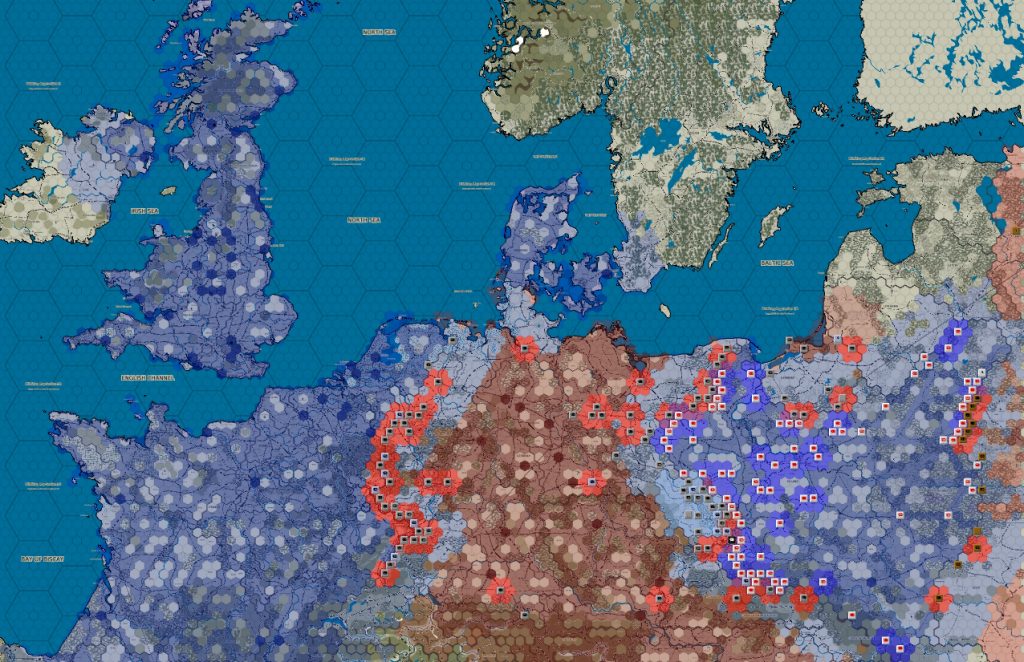The Board Games
TSWW (The Second World War) games are available as printed board games and can be found at www.tkc-games.com. Unparalleled in scope and scale, the largest of these “board” games is over 500 square feet with a rule book going into the hundreds of pages. There is a dedicated clientele and online community, and the games are sold directly from the TKC Games website and retailers worldwide.

The game system is, unlike most paper products, carefully designed around a mathematical model. In effect, all combat is generated via superbly researched data sets, reminiscent of Norm Koger’s “Operational Art of War” computer games, in that the content of every asset in the game is based on extensive world class research.
The Combat Model
This, along with the system’s combat model, which is based on Trevor Dupuy’s “Numbers Prediction and War” methodology, using calculated lethality indices, gives a unique opportunity to develop an accurate and exciting conflict simulation that, from its inception, was created with computer gaming in mind.

The system is operational in scope and scale, with its current hex-based mapping being approximately 15 miles across each hex, or more correctly (the mapping being based on a modified equi-area Mercator projection) approximately 225 square miles per hex, with combat units being optimised at the divisional level (with smaller assets for effect and additional power).
Similarly, air and naval operations are precisely modelled within the half-monthly time frame typical in the TSWW game system with small craft represented by flotillas and individual ships above specified displacements, while air operations are based on squadron- and wing-sized assets.
Thorough Research
With some 180,000 man-hours of research dedicated to the system to this point, it is unlikely any other prospective partner in such an undertaking could provide the skills, knowledge, and data sets necessary for this type of e-media project in a timely fashion.

Extensive testing has shown that the system works with remarkable accuracy assuming that the players take historical decisions within the historical time frames. This accuracy is exceptionally rare in the board gaming community, and again provides a level of surety that the system works, and this would be most useful in developing an e-media based product.
From Paper to Digital
Not only can the processes be applied to the massively researched (and largely completed) TSWW game system, it can be used at smaller unit scales with great success. This opens other options within a prospective e-media product potentially allowing “drilling down” to control combat at smaller scales with ease, perhaps drawing on ideas from other products like John Tiller’s Campaign Series to show combat at the tactical level, or perhaps down to the squad level.

Over a period of time, it might also be possible to develop elements of the game via the drill down concept into a multi-layered system with operational/strategic control at the very highest level, and First Person Shooting as its bottom level. This ambitious idea is derived from the mass popularity of game franchises such as Call of Duty and Killzone, as well as the enduring sales performance of the more “strategic” titles mentioned above.
Continue to The Prototype